A workshop featured in the heritage programme ‘London Unseen ’ supported by the Mayor of London
‘We all want quiet. We all want beauty … we all need space. Unless we have it, we cannot reach that sense of quiet in which whispers of better things come to us gently.’
Many of us may enjoy Hampstead Heath, visit National Trust properties, talk about preserving the ‘green belt’ from development and shop at Octavia Foundation charity shops.
But, who do we owe this legacy?
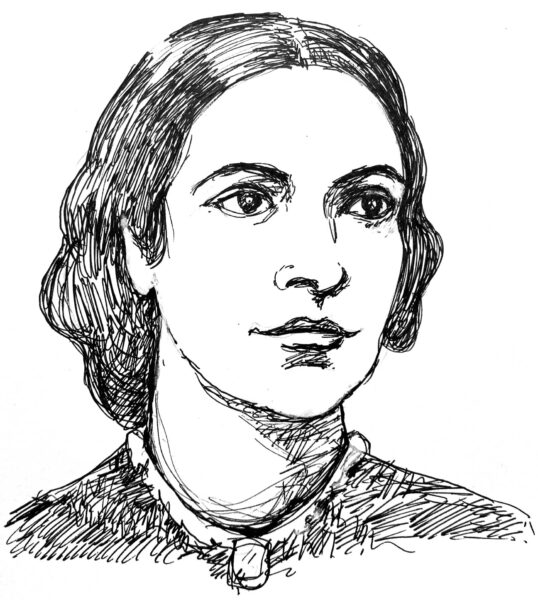
Original drawing by Anne Sassoon
Octavia Hill
3 December 1838 – 13 August 1912 Housing reformer Co-founder of the National Trust
Background
Octavia was seven when her father was declared bankrupt, suffered a breakdown and left the family. She was brought up by her mother and home schooled, the family was supported by her mother’s father, Thomas Southwood Smith, public health reformer. However, mother and daughters Octavia and Miranda, had to find employment. Teenage, Octavia was in charge of toymakers at the Ladies Guild, taught maths at the Working Men’s College and was copyist for John Ruskin. This exposed her to the poverty and miserable living conditions of many working-class families. Her own family was also learning how to cope with little money.
Achievements
Octavia, backed initially by Ruskin, set up a system of housing management. This supported those less well-off, promoting the wellbeing of tenants. It aimed at building healthy communities. She empowered women to find jobs. This was done by creating a system of rent collection where her all-female team worked with women to resolve family issues and become more self-supporting. She campaigned for clean air and open spaces, coining the term ‘green belt’, and fighting to save woodland and open land such as Hampstead Heath, from development. This work led to her co-founding the National Trust in 1895.
Controversial stances
Octavia was opposed to the provision of state housing believing that people should be helped to take personal responsibility and not rely on the state. She did not support the creation of pensions for the elderly.
She also opposed parliamentary votes for women, considering women unfit to take responsibility for international policy, defence and national budgets. However, she actively supported women’s political involvement at a domestic level.
Girls Talk
October 11th is the International Day of the Girl Child. We welcomed girls to a safe space to reflect on being ‘girl children’ and consider what it means to be a girl or young woman in 2022. We questioned how different or similar the pressures are on young women now to those on girls 150 years ago. How similar or different too are their aspirations and the opportunities open to them?
In our workshop, led by trainer Elisabeth Scoggins, we explored barriers women have faced over the years and discussed how we can look to trailblazers from previous generations, such as Octavia Hill, for inspiration and to learn from. We reflected on issues that continue to resonate:
- Physical and mental wellbeing and the part played by families, communities, and state in the creation of a healthy society
- The multiple roles women juggle: wife, mother, housekeeper, educator, provider……
- The empowerment of women through work, legal status and visibility
Introduction – girls brainstormed expectations of women now and the same key words kept appearing
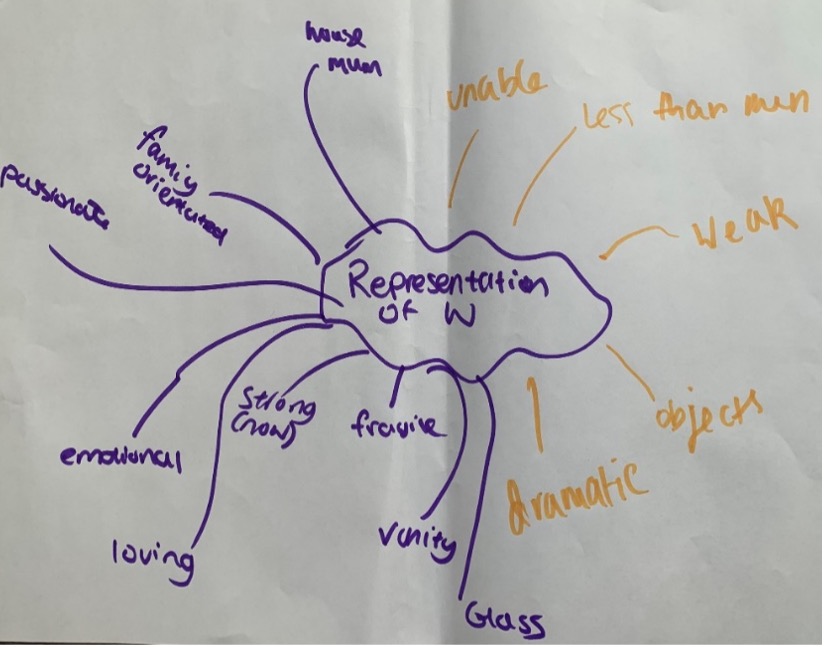
Octavia Hill
Girls learned about, and considered aspects of, Octavia’s life and discussed how her life reflected these same expectations negatively and positively:
hard-working family orientated passionate ambitious dedicated strong weak
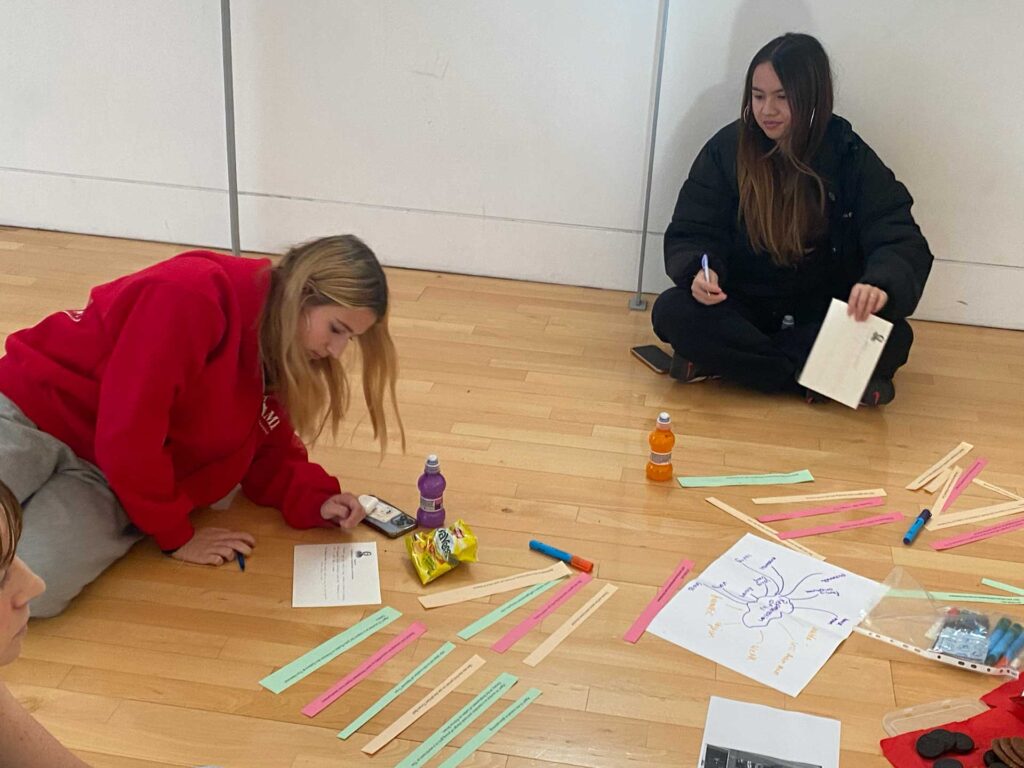

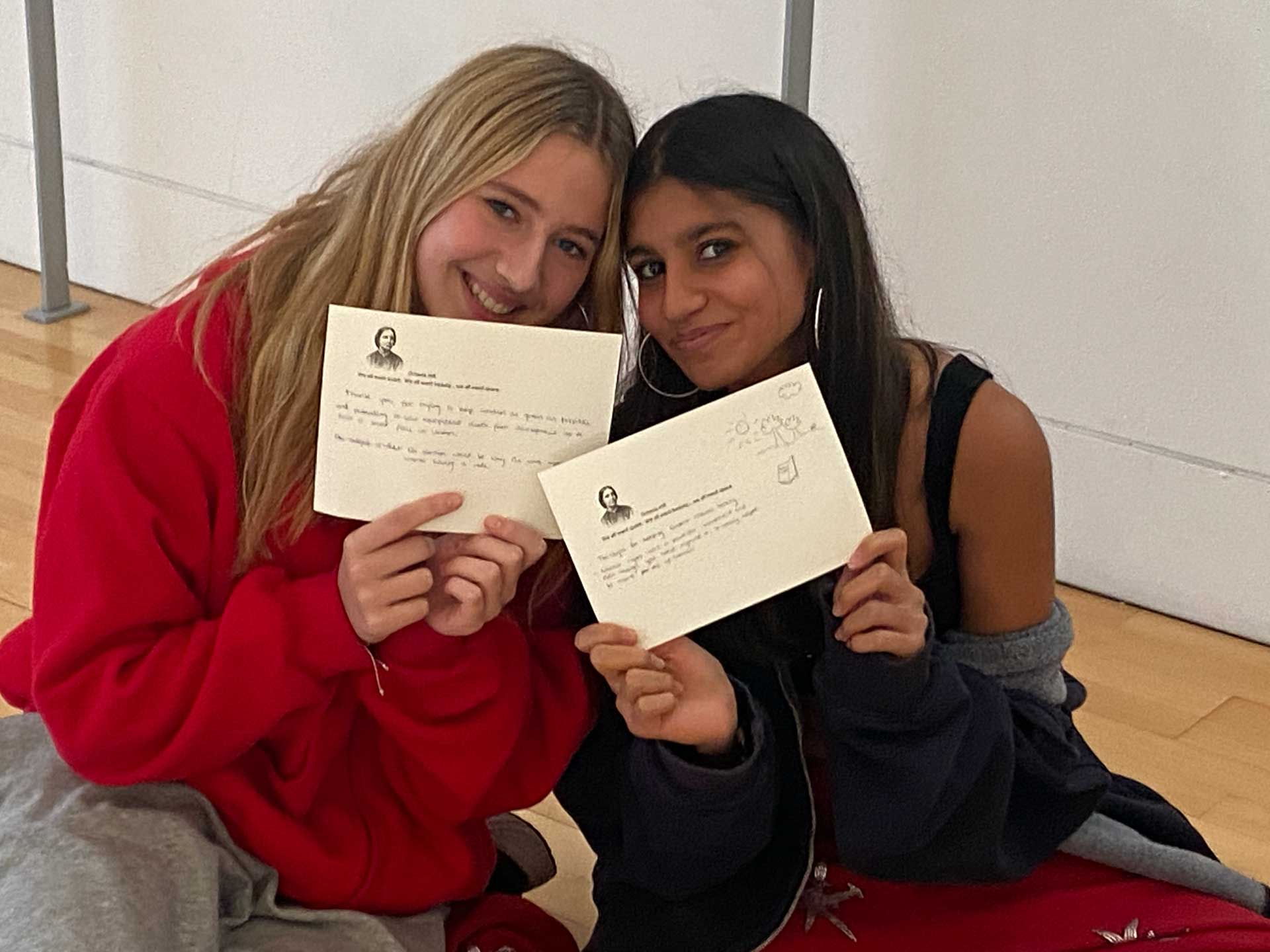
Group discussion: did these traits make her who she was or stand in her way?
They thanked Octavia for her legacy and posed questions for her:
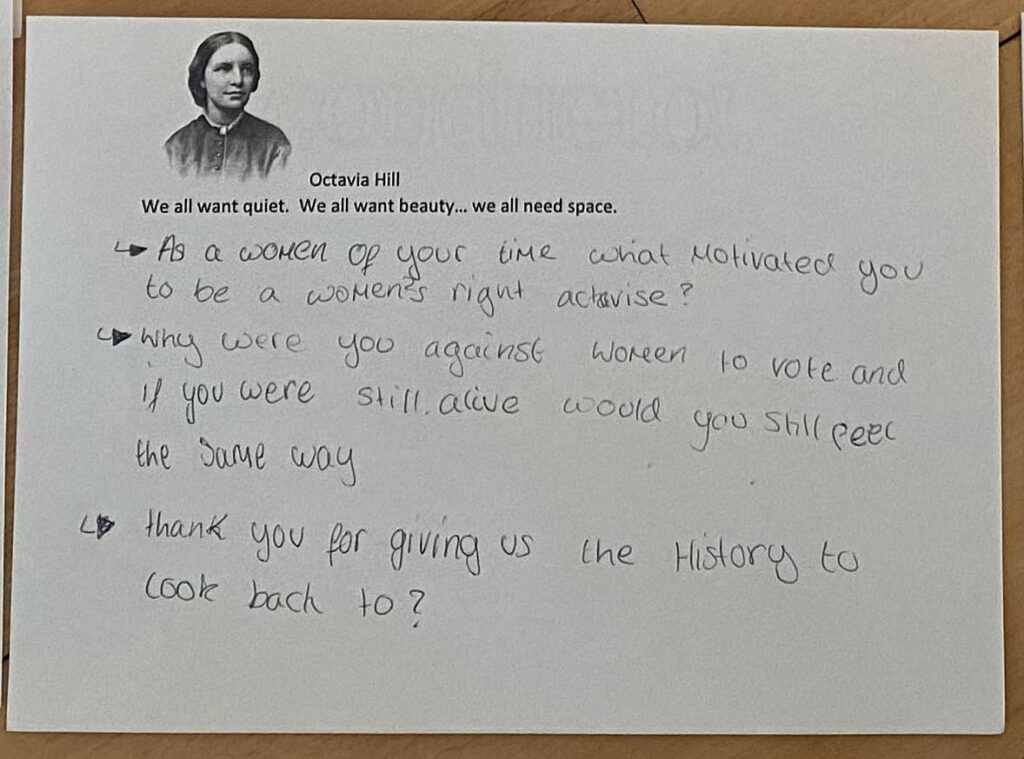
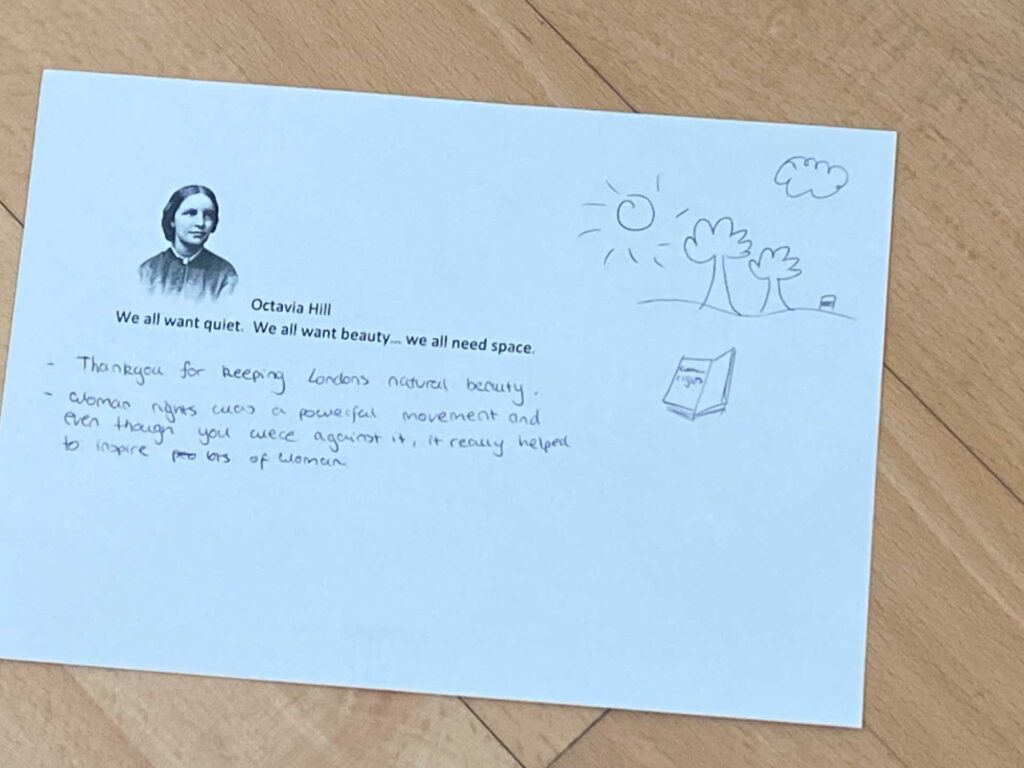
Reflections: The group then discussed issues that arose:
Octavia Hill has got a blue plaque in her name in Marylebone where she began her work. Her name appears on charity shop fronts, there is an Octavia Foundation but still her story is little known. Why?
Which other women have plaques or statues in their honour and what were their achievements? In Bloomsbury, for example, we have a blue plaque for Lady Ottoline Morel and a Nubian Jak plaque for Mary Prince. There are statues of Virginia Woolf, Dame Louisa Aldrich-Blake and Noor Inayat Khan.
Is it enough to have a plaque or a statue? How can we learn about women’s stories, understand the barriers they faced and realise the true significance of their achievements?: Workshops, debates, the incorporation of women’s stories in history books.
Which women now should we acknowledge and find inspiration from and how should they be remembered?: girls suggestions included: Malala, Simone Biles, Michelle Obama, Harriet Tubman. What are British young women doing?
Some feedback
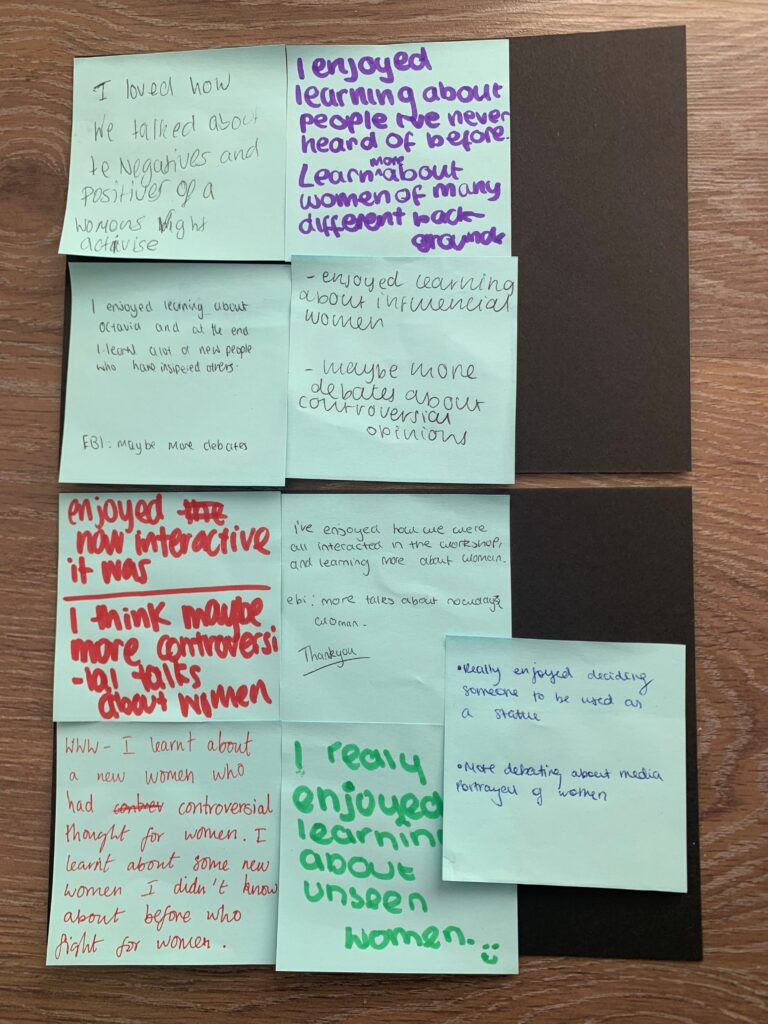
The event featured in the heritage programme ‘London Unseen’ supported by the Mayor of London. London Unseen: Heritage Tours and Trails | London City Hall
For more information, please contact sally@pascal-theatre.com


